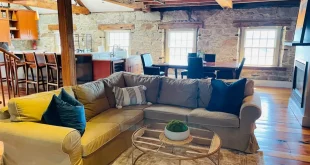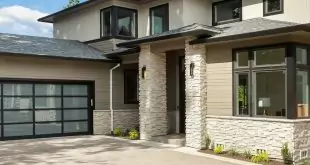We all need to change up our homes sometimes. But, more and more people are becoming aware of the potential for environmental damage associated with new construction. The good news is that there are many conscious choices you can make for a healthier, cleaner home that is far more environmentally friendly. Before your next redecorating or remodeling project, consider the following choices:
1. Upgrade to a green mattress.
Time for a new mattress? Consider switching from a conventional mattress to a green mattress. Conventional mattresses produce a lot of pollution during their construction. And, when their useful life is over, the components can be difficult or impossible to recycle.
A green mattress is made with natural, typically organic materials. This means no harmful pesticides while materials like rubber or cotton are cultivated. No harmful chemicals are used during manufacturing. And, the materials are biodegradable, which means it won’t cause pollution at the end of its useful life.
2. Add some color with no-VOC paints.
Nothing freshens up a room like a new pop of color. But, many paints contain volatile organic compounds (VOCs) that aren’t good for your lungs.
No-VOC paints work just as well as conventional paints, without the harmful fumes. They’re available in a big range of colors to allow you to brighten up your space without risking your health.
3. Deconstruct instead of demolishing.
Salvaged and repurposed construction materials are a hot green trend. But, many people don’t realize that their own homes can be a great source for salvaged goods. Everything from lumber to flooring, bricks, tiles and light fixtures can be repurposed.
Have materials that are still good but not what you want? Consider a swap. Advertise what you have on craigslist or Facebook and see what other salvaged materials people are looking to barter.
4. Add natural light.
Rooms with natural light feel fresher and more pleasant to be in. They also use less energy to keep them lit. Swapping light grays or browns for darker colors can make the room feel warmer and brighter. Adding a light-colored rug to the room is another way to make it feel lighter and more open. Finally, decorate with mirrors to reflect the light in the room and make it feel brighter.
5. Add blackout curtains.
By the same token, you can warm and cool your house based on the amount of natural light you want to let in. In the winter, more light is better, because it heats the room up naturally. But, in the summer, blocking out light can keep heat out and lower your electric bills.
Blackout curtains come in a range of colors and patterns. By blocking light, they can keep a room cooler, which makes it more comfortable. You can even switch out your curtain choices by season to match your needs throughout the year.
 6. Choose bamboo floors.
6. Choose bamboo floors.
Eco-friendly bamboo is becoming a more and more popular choice. It’s highly durable and comes in a wide range of styles. Bamboo is a fast-growing grass and reaches maturity about four times as fast as hardwood trees. Plus, it’s a lot cheaper than hardwood, meaning you have more money available for other parts of your upgrade.
7. Shop for secondhand furniture.
Before heading to a retail outlet to buy something newly made, check out secondhand sources that include Facebook Marketplace, Etsy, Craigslist, flea markets, and thrift stores. By choosing a product that is already made, you can avoid the use of new materials and resources.
There are a number of furniture designers who repair and upcycle existing items to give them a new life. These items stay out of the waste stream and continue to be used instead of discarded. Choosing these means supporting an independent artist, getting a one-of-a-kind piece, and having an option that makes your home a more environmentally friendly place.
8. Use what you have.
It can be tempting to add cheap elements from dollar stores, inexpensive home goods stores and other sources. But, before you do that, look to other, less disposable options. Many people find that using what they already have allows them to give rooms fresh looks. Move items from one room to another, or curate collections so that you only show a few items at a time.
Every home improvement project offers opportunities to make sustainable, eco-friendly choices. By thinking about the different possibilities before you dig in, you can make the right choice for the environment while improving the look and feel of your home.
 World inside pictures Collect and share the best ideas that make our life easier
World inside pictures Collect and share the best ideas that make our life easier









